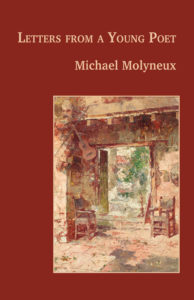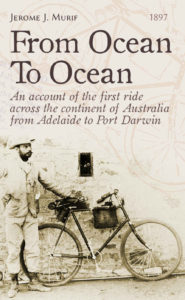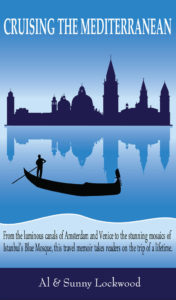 Title: Letters from a Young Poet
Title: Letters from a Young Poet
Author: Michael Molyneux
Designer: Shanti arts Design
Genre: Travel, memoir
Graphics: I mistook this book’s genre immediately—and twice. At first I presumed this to be a book of poems, given its graphical style. (More on that below.) Then I realized that the title promises letters rather than poems, so I thought it was about a young man’s struggles to become a successful poet: a poetic coming-of-age story.
It is neither of these. It consists of more than seventy short recountings of things and people the author experienced as he traveled solo through Latin America. I never would have gathered that, had I not looked at the first few pages of text.
The indistinct painting shows a doorway into a garden. On the wall is a guitar, on the walls some paintings, and at the sides two chairs. The style is Impressionistic, and that’s not conducive to clarity at small sizes. At thumbnail size, most elements of the painting are indecipherable. The chairs and guitar can be made out but not much more.
The scene does have a Latin American look to it, so in that degree it’s appropriate for a travel memoir that takes place far south of the border, but the scene doesn’t necessarily suggest travel in and through Latin America. It doesn’t suggest interacting with people met on the journey—something, from the table of contents, that seems to be a big part of the retelling.
I mentioned that I at first thought this to be a book of poetry. That’s because many such books—not just those produced by indie authors but also those produced by smaller traditional publishers—are laid out as this one is: a boxed, artsy image, chosen seemingly because it’s pretty, not because it relates to any particular poem, with the box taking up less than half the real estate of the cover, the remainder being the title and author name in a nondescript font, with everything on a background of a single, solid color.
Perhaps people and firms that produce poetry books have tended to use a common template. If so, they would do well to discard it. Other genres have template-like covers. Many science fiction books or police procedurals look like close cousins of one another, but those templates at least speak to the respective genres. The imagined poetry template doesn’t.
The artwork seems like an afterthought, something to take up space so the cover isn’t reduced to two lines of type, as this cover would be if the image were deleted.
As I say, that’s for poetry books, but this isn’t a poetry book. It just looks like one. I suspect others who have come across the kind of poetry books I have seen will have the same reaction. They will think they will find poetry and so either will pass up the book (because they aren’t looking for poetry) or will purchase it and become disappointed (because they are looking for poetry).
Typography: It’s hard to say what should be done about the uninspiring font used for the title and author name. As a start, there should be two fonts, a serif font for the title and a sans serif for the author name. The latter should be in all caps, not upper and lower caps, as the title presently is.
The title should be in a font with some hint of movement or even place, and it should be set in upper- and lowercase letters. The book is about traveling in Latin America, so a font with a few flourishes might be appropriate for the title, which could use a little verve.
The author name is too small, and the title is far too small. If the image is kept boxed, it could be raised to provide space at the bottom (but not too near the bottom!) for the author name. The author name and box should be centered, there being no particular reason to have them off to the right.
Moving the author name would leave room at the top for the title, which should be centered in two lines: “Letters from/ a Young Poet”. The font should be about twice the present height.
These adjustments would help, but the predominant element of the cover would remain what it is: not the text and not even the image but the mass of color in the background. The way around this is to get rid of the background by making the image extend over the whole of the cover. If that were done, the text would have to be arranged other than as proposed above.
In that revision, I would place the title in two lines at the bottom, across the flagstones, and would put it in a thick-lined font and in black. The author name I would put atop the lintel at the top. It also would be in black.
Overall: I mention alternate reworkings of the cover because I see no completely satisfactory solution, at least so long as the image is retained. It doesn’t work in its present small size, and it will remain with deficiencies even if made full size.
Having the image take up the whole of the cover may be the better way to go; at least it gets rid of the overpowering dark-red background, and it also might prevent people from jumping to the wrong conclusions that I jumped to.

 Title: The Dirtbag Handbook
Title: The Dirtbag Handbook Title: From Ocean to Ocean
Title: From Ocean to Ocean Title: Cruising the Mediterranean
Title: Cruising the Mediterranean Title: Italy Travels & Adventures
Title: Italy Travels & Adventures